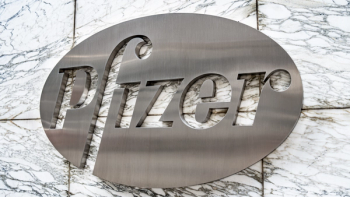Key Takeaways
- Johnson & Johnson targets pediatric Crohn disease (CD) treatment: The company has submitted a supplemental Biologics License Application to the FDA to expand Stelara (ustekinumab) use in children aged ≥2 years with moderately to severely active CD.
- Phase III UNITI-Jr trial supports submission: Clinical remission was achieved by 52.1% of pediatric patients by week eight of induction, with sustained remission rates observed through 44 weeks of maintenance therapy.
- Limited treatment options drive urgency: With rising pediatric CD rates and few approved therapies, Stelara could offer a much-needed new option for young patients.
Johnson & Johnson announced that it has submitted a supplemental Biologics License Application (sBLA) to the FDA, seeking to expand the use of Stelara (ustekinumab) for children aged two years and older with moderately to severely active Crohn’s disease (CD). According to the company, submission of the sBLA is supported by data from the Phase III UNITI-Jr trial.1
Can Stelara Offer a New Treatment Option for Young Children with Crohn Disease?
“Living with a lifelong condition like Crohn’s disease can be incredibly challenging, especially for children and adolescents who may experience more severe symptoms and faster disease progression than adults. With limited approved treatment options to support the specific needs of this patient population, many children with a Crohn’s disease diagnosis continue to struggle,” said Chris Gasink, MD, VP, medical affairs, gastroenterology & autoantibody, Johnson & Johnson Innovative Medicine, in a press release.
Phase III UNITI-Jr Trial: Design and Key Findings
- The multicenter, open-label UNITI-Jr trial evaluated the safety, efficacy, and pharmacokinetics of Stelara in 101 patients aged two years and older with moderately to severely active CD.
- Primary endpoints of the trial included the number of participants with clinical remission at induction week eight, the number of patients with adverse events (AEs), the number of patients with serious AEs, the number of patients with AEs leading to discontinuation of study intervention, and the number of patients with AEs of interest.1,2
- Results show that 52.1% of patients who weighed at least 88 lbs. achieved clinical remission at induction week eight, with clinical response observed in some patients as early as week three.
- During the 44-week maintenance phase, 43.5% of patients on 90 mg every eight weeks (q8w) and 60% on 90 mg every 12 weeks (q12w) maintained clinical remission.
- Endoscopic response at week 44 was achieved by 22.7% in the q8w group and 28% in the q12w group.
- The safety profile of Stelara was reported to be consistent with previous studies in adults with CD.3
Crohn Disease: Prevalence, Demographics, and Stelara’s Treatment History
According to MedlinePlus, CD is most common in Western Europe and North America, with an estimated prevalence of 100 to 300 per 100,000 people. Nearly one million people in the United States are currently living with CD, 25% of whom are children. While the exact cause remains unclear, the prevalence of CD in the United States has been increasing in recent years.1,4
According to Medscape, there are two peak onset periods for CD. The first occurs between 15 and 30 years of age, while the second occurs mainly in women between 60 and 70 years. Approximately 20% to 30% of all cases are diagnosed before a patient reaches 20 years of age. CD is reported to be more common in White individuals compared to Black individuals and is rare in Asian and Hispanic populations. Rates are notably higher in people of Jewish descent, particularly among Ashkenazi Jews and Jews of Middle European origin.5
Stelara was first approved in 2009 for the treatment of psoriasis and was approved for the treatment of CD in adults in 2016. Other approved indications include ulcerative colitis, psoriatic arthritis, and plaque psoriasis.6
“With the well-established efficacy and safety profile of Stelara in existing indications, this submission aims to better support these patients, their families, and providers with a new treatment option,” concluded Gasink, in the press release.
References
1. Johnson & Johnson seeks U.S. FDA approval of STELARA® (ustekinumab) for the treatment of pediatric Crohn’s disease. J&J. June 17, 2025. Accessed June 18, 2025. https://www.jnj.com/media-center/press-releases/johnson-johnson-seeks-u-s-fda-approval-of-stelara-ustekinumab-for-the-treatment-of-pediatric-crohns-disease
2. A Study of Ustekinumab in Pediatric Participants With Moderately to Severely Active Crohn's Disease (UNITI Jr). Clinicaltrials.gov. Accessed June 18, 2025. https://clinicaltrials.gov/study/NCT04673357
3. European Commission approves STELARA® (ustekinumab) for the treatment of moderately to severely active Crohn’s disease in paediatric patients. J&J. April 2, 2025. Accessed June 18, 2025. https://innovativemedicine.jnj.com/emea/european-commission-approves-stelara-ustekinumab-for-the-treatment-of-moderately-to-severely-active-crohns-disease-in-paediatric-patients?utm_source=chatgpt.com
4. Crohn's disease. MedlinePlus. Accessed June 18, 2025. https://medlineplus.gov/genetics/condition/crohns-disease/#frequency
5. Crohn Disease. Medscape. Accessed June 18, 2025. httpsx://emedicine.medscape.com/article/172940-overview#a5
6. Stelara FDA Approval History. Drugs.com. Accessed June 18, 2025. https://www.drugs.com/history/stelara.html





